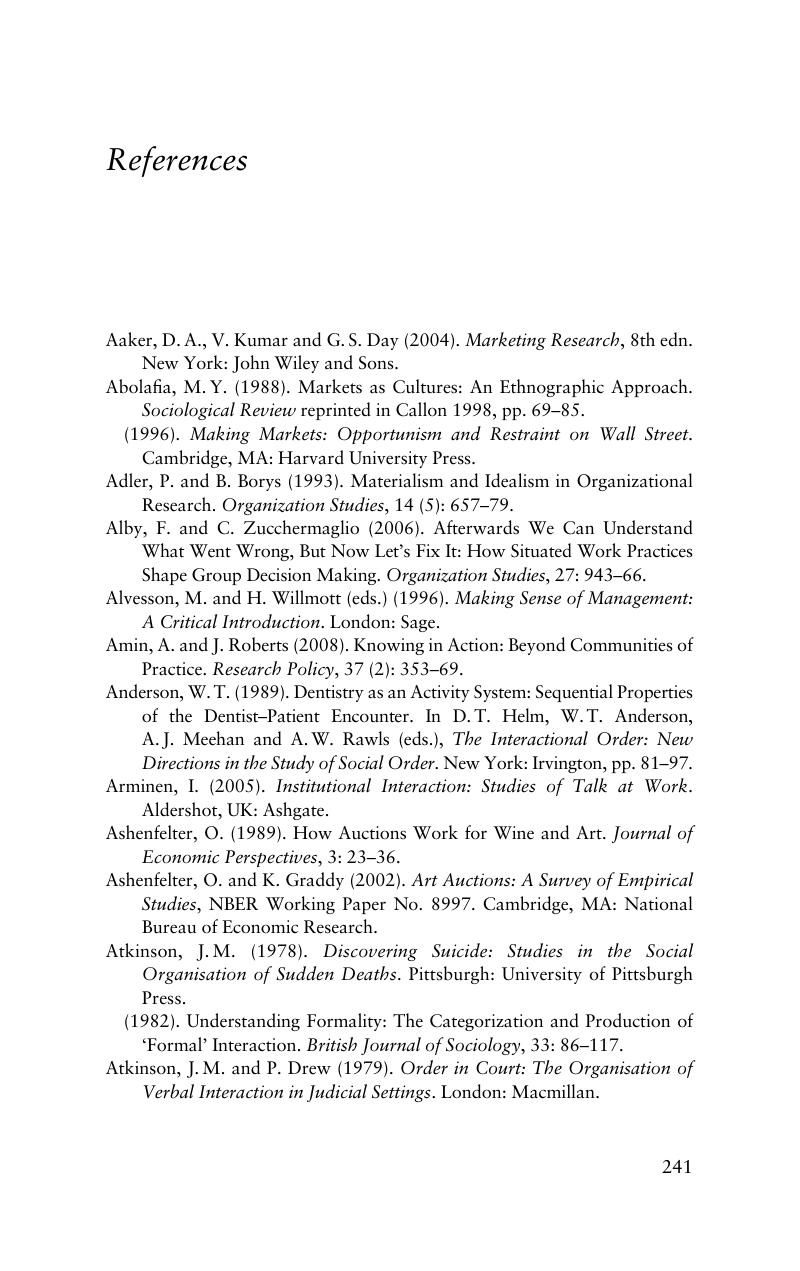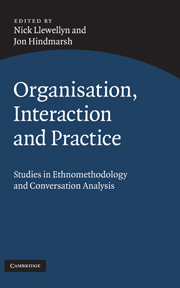List of references
Published online by Cambridge University Press: 20 May 2010
Summary

- Type
- Chapter
- Information
- Organisation, Interaction and PracticeStudies of Ethnomethodology and Conversation Analysis, pp. 241 - 262Publisher: Cambridge University PressPrint publication year: 2010



